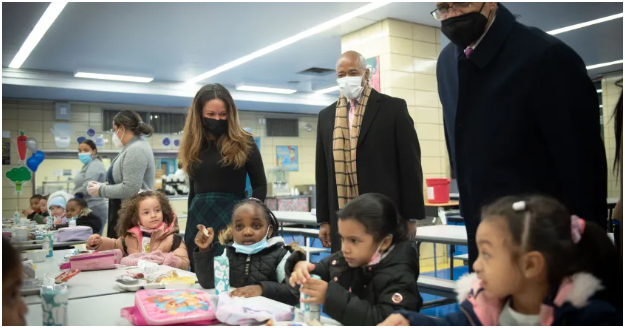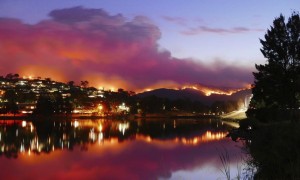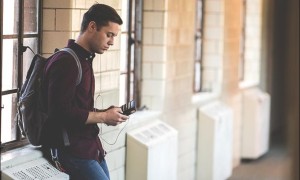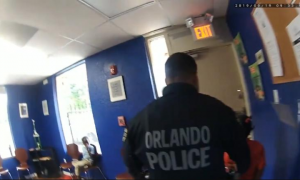As New York City sees a surge of new immigrants seeking asylum from Central and South American countries, officials announced Friday that they will provide extra enrollment help to hundreds of new students expected to attend city schools.
City officials estimate that about 6,000 such immigrants have entered the city’s shelter system over the past three months, which the administration has blamed, in part, on Texas Gov. Greg Abbott sending migrants on buses to New York.
At least 1,000 new students are expected to enroll in district schools, including preschool-aged children. However, that figure is “fluid” and will continue to change, said education department spokesperson Nathaniel Styer.

Many of these students may need extra support, such as legally mandated services for children learning English as a new language.
“Our public schools are prepared to welcome families seeking asylum with open arms,” said Chancellor David Banks in a statement. “We are working alongside our agency partners to set students up for success by addressing their academic, emotional and social needs, and ensuring there is no disruption to their education.”
As part of a city plan dubbed “Project Open Arms,” shelters will host “pop-up” enrollment offices, where education department staff will help new families sign their children up for school. Staff will also accompany families to Family Welcome Centers, which are city offices where people can enroll their kids and get more information about school.
Staff will give out backpacks and school supplies and connect new asylum-seekers with the city’s Department of Health and Mental Hygiene Clinics for medical care, officials said. The city also plans to work with community-based organizations that work with immigrant families so that they can provide families with “critical resources and services.”
Enrollment officials are placing students in schools with open seats that are near their shelters, and considering a family’s preferred choice of language instruction, according to the department. Children who are learning English are entitled to traditional English as a new language instruction, meaning their classes are in English but they’re supposed to get extra support and translation help during and outside of class. They can also choose bilingual programs or dual language instruction, but most city schools lack such programming, according to program data from last school year.
So far, students are concentrated in Districts 2 and 3 in Manhattan, District 10 in the Bronx, District 14 in Brooklyn, and Districts 24 and 30 in Queens, officials said. These new students range across ages and grades, said Yesenia Escalante, an education department enrollment counselor.
Students who enroll after the traditional admissions process has concluded tend to have higher needs, such as this influx of asylum seekers. In the past, late-arriving students have been sent to lower performing schools, raising questions about where these new immigrant students will be enrolled and whether they will be adequately served.
Enrollment has declined across the city, meaning there could be enough seats available across many different types of schools.
In Manhattan’s District 2, officials have been speaking with families at shelters, then connecting them to individual schools, said Kelly McGuire, superintendent for the district.
“Our schools have pulled together some of their office staff, they have folks who are enrolling students directly at the school site, and that’s kind of the critical piece in terms of evaluating who the students are, what their language needs are, their students with disabilities, making sure that they are getting connected with the services that they need,” McGuire said.
Kamar Samuels, superintendent of District 3, noted that they’re working with organizations and schools’ staff to ensure students “are feeling welcome.”
“We’re working with CBOs, we’re working with school staff to just make sure that we tap into all of the resources that we have regarding language and making sure that we have access to those languages,” Samuels said.
The new wave of students comes as schools across the city are seeing budget cuts due to projected declining enrollment, though a legal fight could eventually overturn those cuts. Deputy Chancellor Dan Weisberg said that schools seeing an influx of new students, particularly those with extra needs, will be able to request more funding, such as to hire more staff — a process, he added, that’s not unique to this school year.
“You might need to immediately post and hire for an additional guidance counselor, or an additional (English as a new language) teacher, and if you need to do that, you’ll talk to your budget director, you talk to your superintendent, and you’ll get it posted very quickly,” Weisberg said of principals. “It won’t be, ‘Oh, gosh, you’re gonna have to wait a few months,’ and then do it then, because you need it right now.”
Advocates lauded the city’s effort to work across various agencies to address immigrant students’ needs.
However, they worried about historic barriers to adequate schooling for new immigrants, which have been the subject of a longstanding state-issued corrective action plan. For example, the city has for years failed to provide legally required services to all bilingual students with disabilities, in part due to a shortage of trained bilingual educators.
“We know there aren’t enough bilingual programs in the city for all of the English language learners that qualify for them,” said Rita Rodriguez-Engberg, director of the Immigrant Students Rights Project at Advocates for Children New York. “We also know schools don’t always inform families of their right to elect bilingual programs.”
Additionally, city officials should ensure that school workers and those at Family Welcome Centers are trained on the legal rights of immigrants, especially those who are undocumented, said Vanessa Luna, co-founder of ImmSchools, which trains schools on supporting immigrant families.
Rodriguez-Engberg and other advocates worried that there won’t be enough bilingual social workers to help these students, who may be experiencing varying degrees of trauma after fleeing their home countries and relatives or friends. City officials said they plan to evaluate every student’s social-emotional needs using screeners that the district launched last school year.
“We want kids to be in schools that can support them – schools that create a sense of safety for the child and for the family,” said Alejandra Vasquez Baur, an education policy expert who focuses on immigrant students for think tank Next 100. “That is critical for the child’s educational opportunities and also the child’s well being in the school.”







